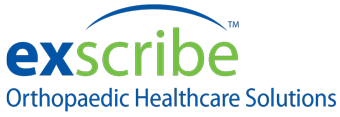Dual coding may be required for ICD-10
Providers who are are working toward achieving meaningful use incentives in 2014 know that this electronic health records program is not the only thing they have to worry about this year.
This author has not written his bio yet.
But we are proud to say that Exscribe contributed 591 entries already.
Providers who are are working toward achieving meaningful use incentives in 2014 know that this electronic health records program is not the only thing they have to worry about this year.
There are many benefits to electronic health records systems for orthopedic doctors.
As providers move through the stages of the meaningful use incentives program, they will need to make sure that their electronic health record systems can communicate with other providers’ systems.
A major part of stage 2 of the meaningful use incentives program involves getting patients involved with the use of electronic health records.
While electronic medical record systems are great tools that could change the way that healthcare is delivered in the U.S., they can also cause problems if they are not monitored stringently.
Providers need to understand that one of the most important steps toward successful electronic health record system adoption is choosing the right vendor.
Electronic health records have been in the news a great deal lately, and a lot of the information has been focused on how physicians are concerned about moving on to stage 2 of the meaningful use incentives program or the impending switch to the ICD-10 coding system.
Exscribe’s EHR has been a definite positive for my practice and my patients. I’m saving at least $1,000 per month on transcription costs.
The Patient Protection and Affordable Care Act has made great progress in advancing the position of health information technology in the U.S. healthcare system.
Digital technology, such as electronic health records, is changing the face of medicine, allowing new opportunities that never even seemed plausible a decade ago.
Health information technology has become the hottest trend in healthcare reform in recent years.
One of the great things about healthcare information technology is that it allows doctors to expand the scope of their services to increase patient accessibility to quality care.
Though the debate rages on in Washington, D.C., about the need for national healthcare reform, recent studies suggests that the Obama Administration’s signature legislation actually is benefiting American healthcare organizations and their patients.
While there have been plenty of supporters of federal healthcare reform, there are numerous detractors who have expressed fears that too much government oversight and intervention could hinder efficient medical practices.
The Patient Protection and Affordable Care Act has aimed to revolutionize the U.S. healthcare system in order to minimize the cost of care and improve the quality of medical services.
The Patient Protection and Affordable Care Act may have made health information technology a priority, but not all forms of HIT are getting equal consideration under the healthcare reform law.
The American healthcare industry is undergoing a massive transformation as a result of the passage of the Patient Protection and Affordable Care Act.
President Barack Obama’s landmark healthcare reform bill, the Patient Protection and Affordable Care Act, has been experiencing some bumps in the road in recent weeks.
Phone: 610-419-2050 (option 1)
Email: techservices@exscribe.com
Exscribe Online
MAILING:
4850 T-Rex Avenue, Suite 200
Boca Raton, FL 33431
LOCATION:
4700 Exchange Court, Suite 225
Boca Raton, FL. 33431
Phone: (610) 419-2050
Toll-Free: (866) 870-1521
Fax: (610) 419-1055
